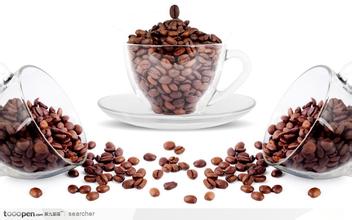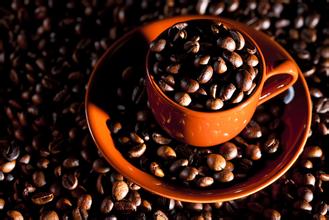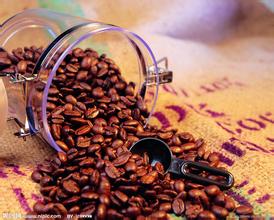Introduction to the flavor and taste characteristics of coffee varieties in Paradise Bird Manor in Papua New Guinea
Papua New Guinea is the second largest country in the South Pacific after Australia in population and area. It consists of New Guinea in the north and Papua in the south. It borders the province of Irian Jaya in Indonesia to the west and faces Australia across the Torres Strait to the south. It belongs to Melanesia.
Papua New Guinea covers an area of 462840 square kilometres, with a total coastline of 8300 kilometres and a water area of 2.4 million square kilometres, including the 200-nautical-mile exclusive economic zone (2013). There are more than 600 islands in the territory. The islands are mountainous, with many volcanoes and frequent earthquakes. Papua New Guinea, including the eastern part of New Guinea (Irian), New England, New Ireland, Manas, Bougainville and Buka, is divided into 21 provinces and capital districts (Port Moresby). The names of the provinces are as follows: central (once translated as "Central"), Northern (once translated as "North"), Chimbu, East New Britain, East Sepik, East Highlands, Enga, Gulf, Madan, Manus, Min Bay, Moroby, New Ireland, North Solomon, South Highlands, West New Britain, West Sepik, West, West Heights, Hela Province, Jiwaka Province) Papua New Guinea
Independent State position of Papua New Guinea
Independent State position of Papua New Guinea
China (The Independent State of Papua New Guinea) is referred to as Papua New Guinea. There are two theories about the origin of a Papuan: one is that the Portuguese Menezes sailed from Malacca to the Maluku Islands in 1526, but the sea breeze blew the ship to an unknown place, and the land was called Papua. It comes from the Malay word tanahpepua, which means the land of curly-haired people. Another theory is that the early Portuguese came here and asked the local residents where it was. The answer is Papua, so they put the ethnic name of Papua and the local place name. The ethnic name comes from the Malay language papuvah (curly hair) or pua-pua (dark brown). Refers to the hair and skin color of the Papuans, the main inhabitants of the island. The island of New Guinea, also known as Irian. Also known as the crocodile capital (crocodile farming is highly developed)
Papua New Guinea is an island country in the western South Pacific and a member of the Commonwealth. The name of the country consists of Papua and New Guinea. There are many small islands here, about 600 in size. It is adjacent to Indonesia and Australia to the south. It belongs to the Asia-Pacific region, but it is a country in Oceania. Located in the tropical climate, high temperature and rainy. It has rich volcanic soil.
The main crops here are coffee and coconut, and the coffee industry plays an important role in the country's economy. More than 1 million people are directly and indirectly engaged in the industry in this country. Papua New Guinea is rich in natural resources, but its economy is very backward. As one of the less developed countries in the world, many mountain residents still live a self-sufficient life of primitive tribes, only the coastal areas are relatively developed. Many farms reclaim land in the forest, some of which are in the depths of the forest, almost isolated from the rest of the world. So there are not many large-scale coffee plantations in Papua New Guinea, and about 75% of the coffee comes from small local farms. Because the country's overall economic level is backward and does not have good production conditions, the coffee output in Papua New Guinea is not high compared with other coffee-producing countries, but the quality of its coffee will not be inferior to that of large coffee-producing countries.
If Indonesia Mantenin is described as an old man with years of precipitation, then Papua New Guinea is a refreshing and elegant beauty. Not only the bean body is beautiful, the flavor is also beautiful and exquisite. From the map, we can see that Papua New Guinea borders Indonesia, but it does not have the full-bodied, miscellaneous and spicy characteristics of Indonesia's Mantenin. On the contrary, the flavor of Papua New Guinea is more balanced and cleaner. As coffee in this country is widely grown in the highlands of 1300 to 1800 meters above sea level, its unique volcanic soil and abundant rainfall create excellent natural conditions for the growth of coffee; and because the local coffee varieties are introduced from the Blue Mountain Coffee in Jamaica, it belongs to iron card species. Coffee beans are basically washed to make the taste better and cleaner. The innate variety advantage coupled with the excellent growth environment naturally leads to high-quality coffee. Besides. The vast majority of coffee in Papua New Guinea is organic coffee, due to inconvenient transportation, there is no railway transport, there is no sound transport network, the overall economic difficulties, coffee farmers do not have the conditions to buy chemical fertilizer. On the contrary, the deficiency of production and transportation conditions has contributed to this major feature of the country's organic coffee.

Important Notice :
前街咖啡 FrontStreet Coffee has moved to new addredd:
FrontStreet Coffee Address: 315,Donghua East Road,GuangZhou
Tel:020 38364473
- Prev

Introduction to the characteristics of coffee flavor and taste varieties in lemon manor in Nicaragua
Since July 1927, Augusto. Cesar. Sandino led the people in a guerrilla war against the US occupation, forcing the US military to withdraw in 1933. On February 21, 1934, the Commander of the Nicaraguan National Guard, Anastacio. Somocha. Garcia assassinated Sandino at the behest of US President Roosevelt. He became president in 1936 and has been pro-American for more than 40 years since then.
- Next

Introduction to the characteristics of Fine Coffee in the producing area of Sidamo Ted Manor Coffee
In July 1991, EGF hosted a national conference with the participation of more than 20 political and ethnic organizations. The meeting adopted the Transitional Charter and elected an 87-member House of Representatives, with EGF Chairman Meles Zenawi as President of the Transitional Government and President of the House of Representatives. A transitional government was established. On May 24, 1993, Eritrea (formerly the province of Eritrea, Ethiopia) adopted
Related
- Does Rose Summer choose Blue, Green or Red? Detailed explanation of Rose Summer Coffee plots and Classification in Panamanian Jade Manor
- What is the difference between the origin, producing area, processing plant, cooperative and manor of coffee beans?
- How fine does the espresso powder fit? how to grind the espresso?
- Sca coffee roasting degree color card coffee roasting degree 8 roasting color values what do you mean?
- The practice of lattes: how to make lattes at home
- Introduction to Indonesian Fine Coffee beans-- Java Coffee producing area of Indonesian Arabica Coffee
- How much will the flavor of light and medium roasted rose summer be expressed? What baking level is rose summer suitable for?
- Introduction to the characteristics of washing, sun-drying or wet-planing coffee commonly used in Mantenin, Indonesia
- Price characteristics of Arabica Coffee Bean Starbucks introduction to Manning Coffee Bean Taste producing area Variety Manor
- What is the authentic Yega flavor? What are the flavor characteristics of the really excellent Yejasuffi coffee beans?

